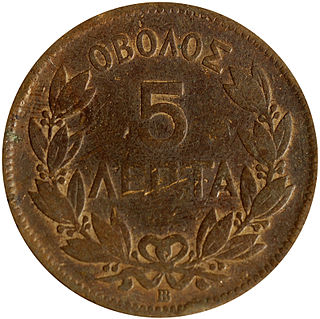 W
WThe coin in the fish's mouth is one of the miracles of Jesus, recounted in the Gospel of Matthew 17:24–27.
 W
WThe denarius was the standard Roman silver coin from its introduction in the Second Punic War c. 211 BC to the reign of Gordian III, when it was gradually replaced by the Antoninianus. It continued to be minted in very small quantities, likely for ceremonial purposes, until and through the tetrarchy (293–313).
 W
WThe lepton, plural lepta, is the name of various fractional units of currency used in the Greek-speaking world from antiquity until today. The word means "small" or "thin", and during Classical and Hellenistic times a lepton was always a small value coin, usually the smallest available denomination of another currency.
 W
WThe lesson of the widow's mite or the widow's offering is presented in the Synoptic Gospels, in which Jesus is teaching at the Temple in Jerusalem. The Gospel of Mark specifies that two mites are together worth a quadrans, the smallest Roman coin. A lepton was the smallest and least valuable coin in circulation in Judea, worth about six minutes of an average daily wage.
 W
WThe tetradrachm was an Ancient Greek silver coin equivalent to four drachmae. In Athens it replaced the earlier "heraldic" type of didrachms and it was in wide circulation from c. 510 to c. 38 BC.
 W
WThirty pieces of silver was the price for which Judas Iscariot betrayed Jesus, according to an account in the Gospel of Matthew 26:15 in the New Testament. Before the Last Supper, Judas is said to have gone to the chief priests and agreed to hand over Jesus in exchange for 30 silver coins, and to have attempted to return the money afterwards, filled with remorse.
 W
WThe tribute penny was the coin that was shown to Jesus when he made his famous speech "Render unto Caesar..." The phrase comes from the King James Version of the gospel account: Jesus is asked, "Is it lawful to give tribute to Caesar, or not?" and he replies, "bring me a penny, that I may see it".
 W
WTyrian shekels, tetradrachms, or tetradrachmas were coins of Tyre, which in the Roman Empire took on an unusual role as the medium of payment for the Temple tax in Jerusalem, and subsequently gained notoriety as a likely mode of payment for Judas Iscariot.